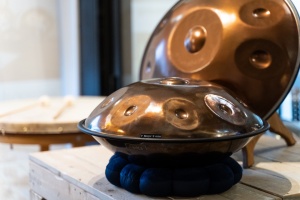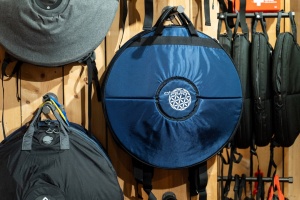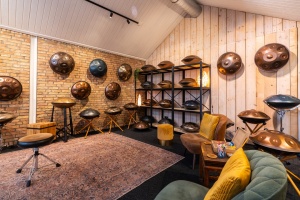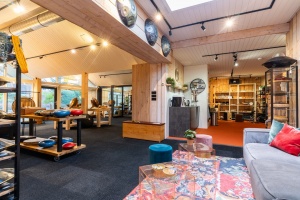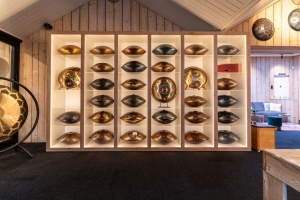What is the origin of the handpan?
The handpan is based on the Hang®. This instrument was designed by Felix Rohner and Sabina Sharer, both working for the Swiss firm PANart, a steel drum manufacturer. The name Hang® is dialect for the word ‘hand’ in the city of Bern. This Hang® was introduced in 2000 after years of study on metal instruments. When the patent ended in 2012, they stopped making the Hang® and switched to the Hang® Gubal. Then other builders started making handpans based on the Hang®.
Google Reviews: (Google translated from Dutch)
Richard Nijhuis: “I had been looking for a hang for a while, ended up at the HandPanShop in Bunnik and I passed a beautiful handpan, which I have had a lot of fun with for a few months now. I got a session of an hour and a half in which they took all the time for me to find the right handpan that suits me. In addition to good advice, also had a lot of fun. Thank you HandPanShop !!”
Aspasia Bergman: “A wonderful experience, where I was able to get my soul instrument. With a nice meeting, good guidance that helped me led to the right instrument. I advise everyone to definitely visit here if you want to buy a hand pan. Thank you, Henk-Jan, until the next time 🙏”
How to build a handpan?
A handpan is made out of two steel shells that are glued to another. The steel is heated and then made hollow to create the shape. The heating process is giving a stainless-steel handpan its golden colour. Ember steel is getting an amber colour and raw steel turns into a blue colour, with a special glow. If the manufacturer wants to create a handpan made of nitrated steel, he will apply a nitration process. These handpans have an anthracite colour. However, the final colour of the various metal sorts depends on the composition of that particular metal, which differs per delivery. The temperature that is being used during the heating process, is also decisive for the final colour of a handpan.
Topside of the handpan
All note fields are marked on the shell and are ‘pre-stressed’. To prepare the metal for tuning, it is heated again to begin the "shaping process" of creating the note field. This is the most difficult and time-consuming process in the production process. It requires a lot of training to acquire this special technique. At the top of the shell in the middle, the lowest root tone (quint) is created. This is called "Ding". The note fields are created around it.
Each note fields must be hammered in a very specific shape. Hammers of different sizes and with various heads are used for this part of the manufacturing process. The builder varies the work both on the inside as well as the outside of the shell. Thanks to the hammers, the note field are getting a different hardness and flexibility than the metal between the note field. This means that each note fields has the perfect balance of three frequencies: the root note, an octave and an overtone. All note field together form a scale, for example a minor or major.
Read more about handpan scales.
The note field must be well positioned and distributed over the shell, so the player can reach all parts of the handpan during playing. In addition, it is important that the note fields are sufficiently insulated so that they can resonate themselves, without making an undesirably contact with other note fields. If so, the hit of one note fields would unintentionally activate another note fields. This is called "crosstalk" and leads to dissonance. This is prevented by leaving enough space around each note fields. Sometimes a field is deliberately rotated a little bit to prevent cross-over. This is a deliberate choice of the builder and not done out of negligence.
The bottom of a handpan
At the bottom, the handpan has a round opening: the sound-hole. This is called "Gu". It ensures that the resonance of the tones can leave the soundbox. The same principal you will find in an acoustic guitar. It is becoming increasingly popular to place extra tones on the bottom.
Reheating after shaping
After shaping, most builders reheat the shells to stabilize the tones. Then the handpan drum will be retuned and finetuned for a number of times. Metals have some kind of memory. This means that it likes to take on its original shape again. By giving the handpan a few weeks rest between each tuning, the metal will eventually retain the shape that the builder had in mind. After this intensive process, a handpan has been created where every tone itself sounds beautiful, but the tones also resonate beautifully together.
Here you can find all information about the sorts of metal and the scales of the handpan. The difference between different names such as Spacedrum®, tongue drum, steel-drum, hang-drum and hand-drum is also explained.







